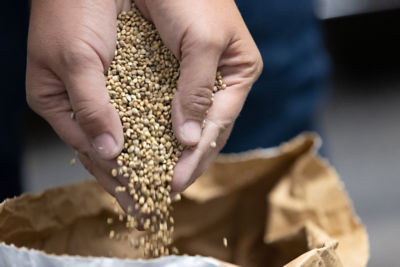Causal Agent
Verticillium dahliae
Verticillium albo-atrum
Distribution
Worldwide
Symptoms
This disease affects all cucurbits. In general, symptom expression occurs at or following fruit set. Crown leaves initially wilt and take on a faded green color. As symptoms progress, leaf margins develop “V”-shaped chlorotic lesions, which eventually collapse and turn necrotic. Wilting may progress along runners, which can result in plant death. Brown discoloration of root and stem tissues at the crown of the plant is visible in longitudinal section. Symptoms may be confused with other vascular wilt pathogens (e.g., Fusarium).
 Wilting of an entire melon plant.
Wilting of an entire melon plant.
Conditions for Development
These fungi have a broad host range and can survive in soil as microsclerotia for many years. Infection takes place through the roots and disease development is favored by cool soil temperatures [21–24ºC (70–75ºF)]. However, wilting is generally observed during warm, dry periods when plants are under stress (e.g., fruit set).
Control
Soil fumigation and solarization have been the only methods shown to effectively reduce the incidence of Verticillium wilt. Avoid infested fields. Implement good cultural practices, including proper disposal of plant debris, deep plowing and a minimum of a three-year crop rotation with non-susceptible hosts (e.g., monocots). Avoid following highly susceptible crops (e.g., cotton, potato or tomato) with cucurbits or other verticillium wilt-susceptible crops. When possible, delay planting until the soil is warm. In protected culture, grafting onto a resistant rootstock may also help provide control.



